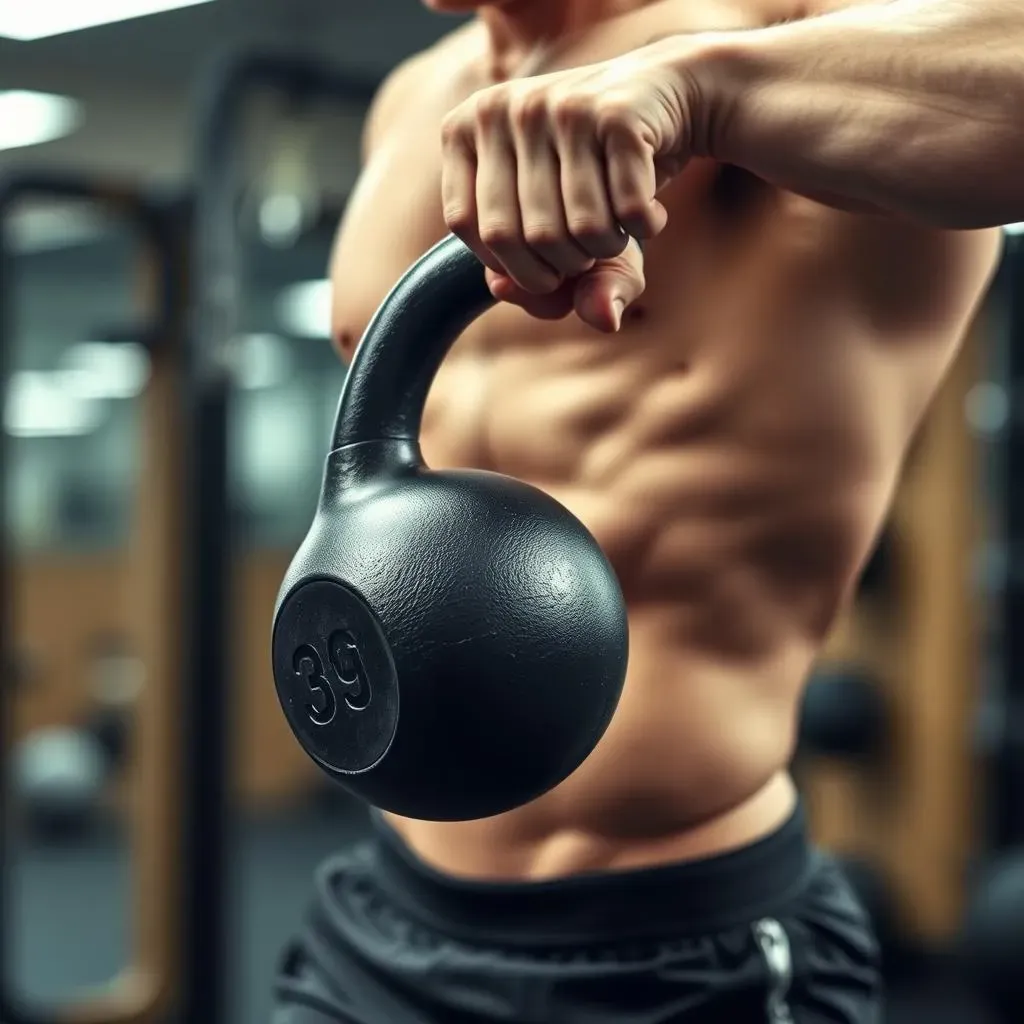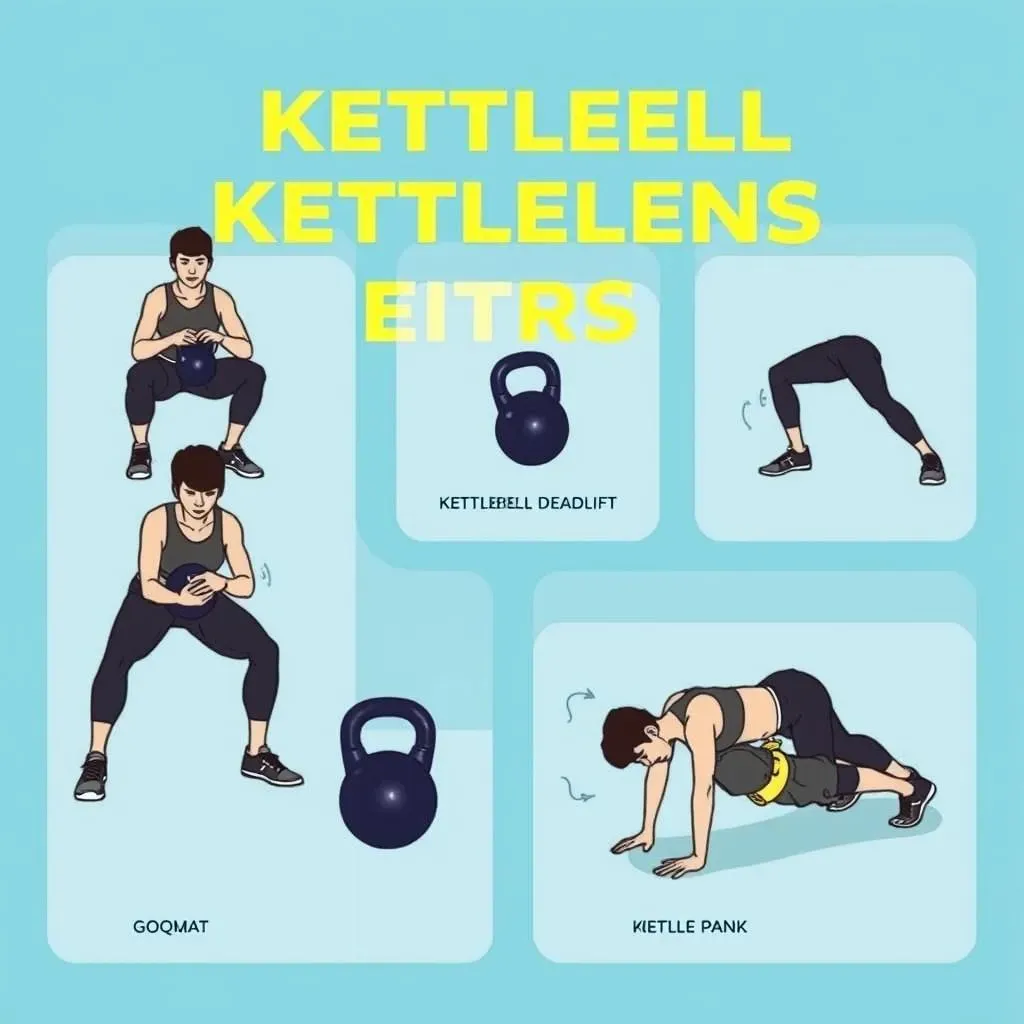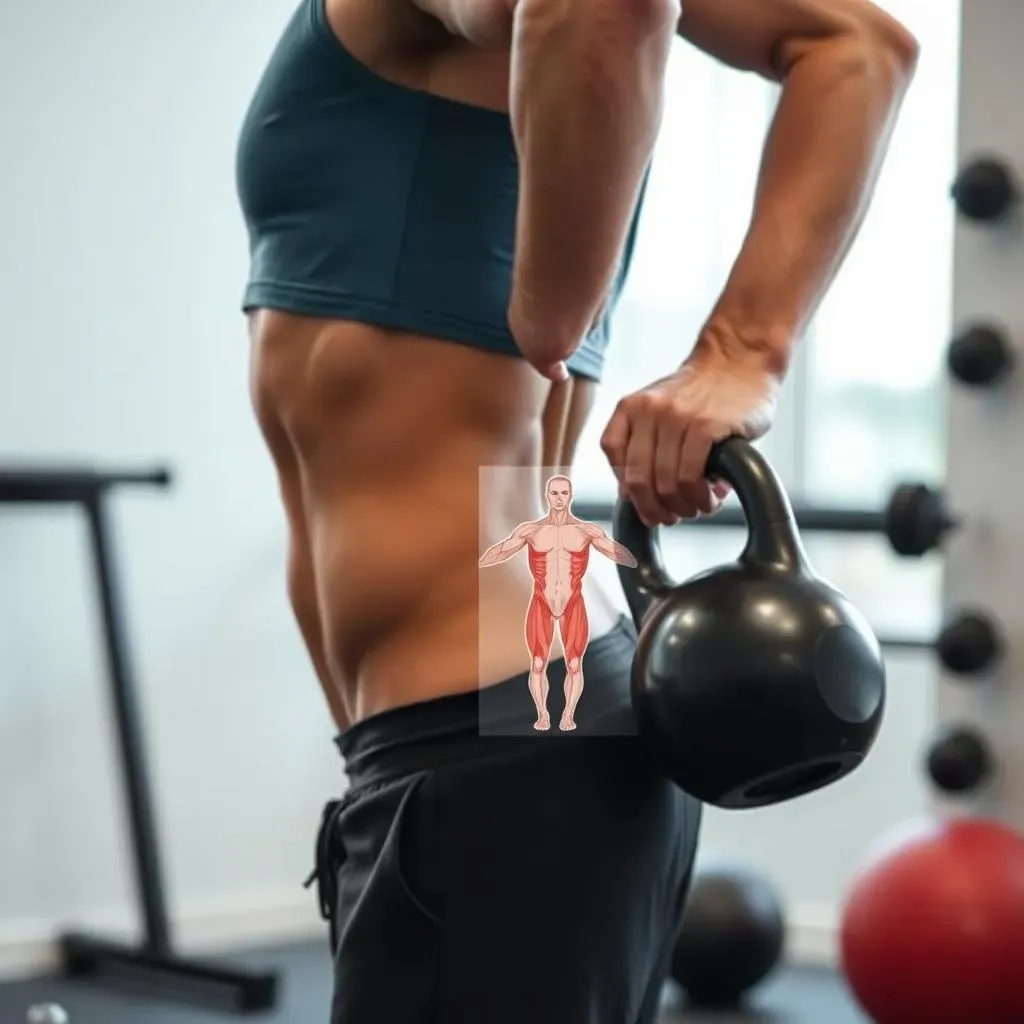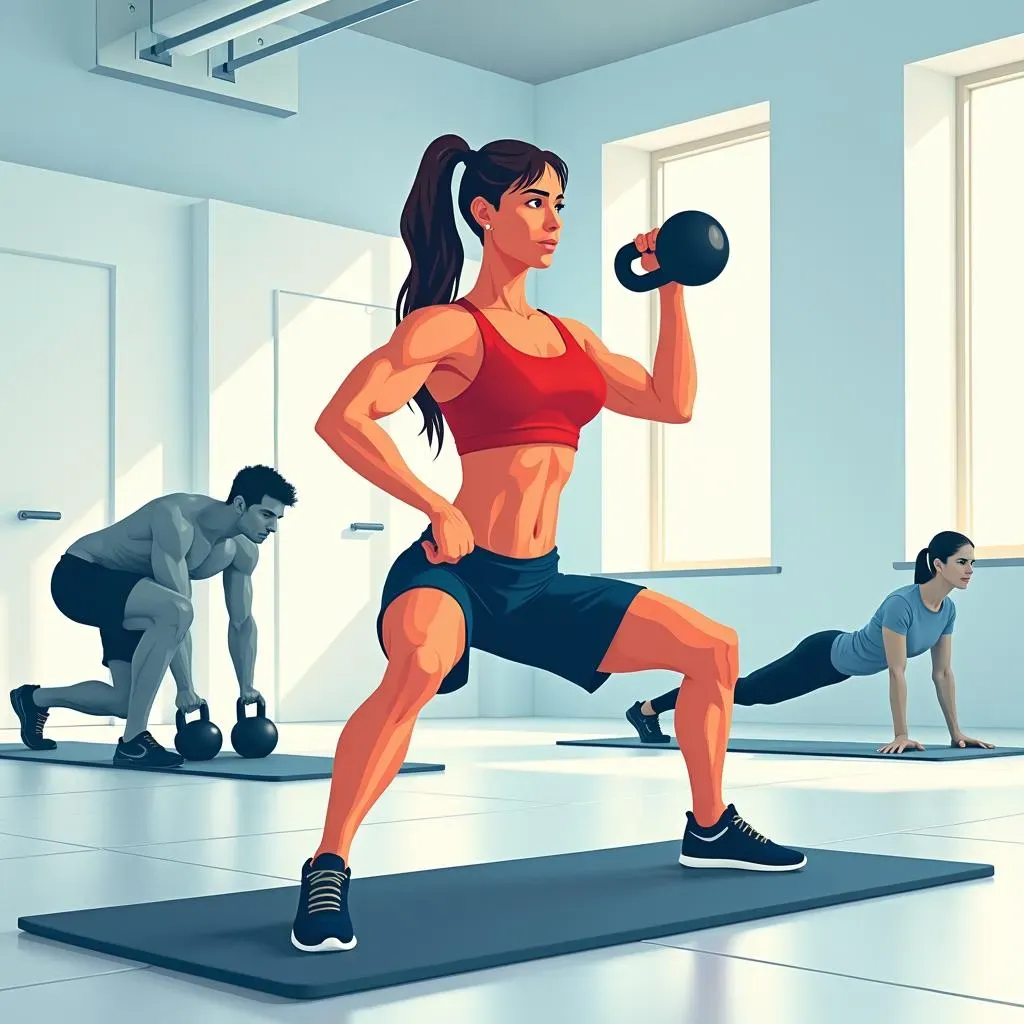Table of Contents
Ever wondered if those heavy kettlebells could actually help your core? You're not alone! Many think kettlebells are just for big muscles, but they're secretly amazing for your midsection too. This article is your guide to "kettlebell core exercises for beginners," and we're here to spill the beans on how to get started. We will break down why kettlebells are fantastic for core strength, even if you’re just starting out. Think of it like this: your core is the engine room of your body, and kettlebells are the tools to build it strong. We'll cover the essential moves that beginners can easily master, plus we will talk about how to do them safely, and how to put together your very own core-strengthening routine. No need to be intimidated, we're keeping it simple and effective, so let’s jump in and get ready to feel the burn in your core!
Why Kettlebells Are Great for Your Core

Why Kettlebells Are Great for Your Core
so you're probably thinking, "Kettlebells? For my core?" I get it. They look like cannonballs with handles, not exactly the image that springs to mind when you think of abs. But here's the deal: kettlebells are secretly awesome for your core, and not just in that "do a million crunches" kind of way. They work your core in a more functional way. Think of it like this: when you're carrying a heavy bag of groceries, your core is the one keeping you upright and balanced. Kettlebell moves mimic these real-life situations, forcing your core to engage to stabilize your body, and not just to flex and crunch. It's like getting a full core workout without even realizing it sometimes! Plus, you’re working other muscles at the same time. It's all about efficiency, my friend.
The beauty of kettlebells lies in their uneven weight distribution. Unlike a dumbbell, where the weight is balanced in your hand, the kettlebell's weight sits below your grip. This forces your core to work overtime to control the movement and prevent you from tipping over. It’s like your core is constantly trying to catch you, building strength. This makes them ideal for exercises that challenge stability, like swings, deadlifts, and even squats. These aren't just leg or back exercises; they're sneaky core builders too. I remember the first time I tried a kettlebell swing; I was surprised how much my abs were working! It's a full-body workout with a core bonus.
Kettlebell Benefit | How it Helps Your Core |
|---|---|
Uneven Weight | Forces core to stabilize |
Full-Body Movements | Engages core in multiple exercises |
Functional Strength | Builds core strength for daily tasks |
Essential Kettlebell Core Exercises for Beginners

Essential Kettlebell Core Exercises for Beginners
The Mighty Goblet Squat
so you're ready to start swinging some iron? Let's not jump into the deep end just yet. The goblet squat is your new best friend. It's not just a leg exercise; it's a core-stabilizing machine! You hold the kettlebell close to your chest, like you're hugging it, and then you squat down. The weight in front of you forces your core to work harder to keep you upright. It's like your abs are doing a secret workout while you're focusing on your legs. And the best part? It teaches you proper squat form, which is crucial for all other kettlebell exercises. I remember when I first started, I thought squats were all about the legs, but the goblet squat showed me how much my core was involved.
It’s all about control. Don’t just drop down like a sack of potatoes. Lower yourself slowly, feeling your core engage. Think about bracing your abs as if someone is about to punch you in the stomach (but please, no one actually do that!). Keep your chest up, back straight, and go as low as you comfortably can. The goal is to keep your core tight and your body stable throughout the whole movement. If you feel wobbly, that's a sign to lighten the weight or focus more on the movement. Trust me, once you get this move down, you’ll feel it all over – legs, glutes, and that core!
Exercise | Core Benefit | Beginner Tip |
|---|---|---|
Goblet Squat | Core stabilization | Focus on controlled movement |
The Classic Kettlebell Deadlift
Next up, let's talk about the deadlift. Now, don't let the name intimidate you. We're not talking about powerlifting competition-level deadlifts here. We’re talking about a controlled, core-engaging deadlift using a kettlebell. The key is to hinge at your hips, keeping your back straight, and lift the kettlebell from the ground. This exercise is fantastic for your posterior chain—the muscles along the back of your body—and that includes your lower back and core. Think of it like you’re picking up a heavy suitcase, but with better form. Your core is the one keeping your spine stable and preventing you from rounding your back, which is something we want to avoid.
The kettlebell deadlift isn’t about how much weight you can lift. It's about maintaining a proper form. Always start with a light weight, and focus on the hinge movement. Imagine you're closing a door with your butt. Keep your core tight, chest up, and shoulders back. As you lift, squeeze your glutes at the top, and feel your core working to keep you stable. I used to think deadlifts were all about my back, but kettlebells taught me how much my core was actually working to stabilize the lift. It is all connected!
The Simple Kettlebell Plank
Now, let's talk about planks. You might think, "Planks? That’s boring!" But trust me, a kettlebell plank is a whole different beast. Instead of just holding a regular plank, you’ll place one hand on the kettlebell handle while the other hand is on the floor. This offset position adds a whole new level of challenge to the stability. Your core has to work even harder to prevent you from tipping over, and it's not just your abs that are working. Your obliques and lower back muscles are getting a serious workout too. It's like your core is constantly trying to balance on a tightrope.
When you’re doing a kettlebell plank, focus on maintaining a straight line from your head to your heels. Don't let your hips sag or your back round. Keep your core tight, and breathe deeply. Start by holding the position for 20-30 seconds, and gradually increase the time as you get stronger. This exercise is a great way to build core endurance and stability, which is crucial for all other kettlebell exercises. It might look simple, but it’s deceptively challenging, and that's what makes it so effective. I used to dread planks, but now, with a kettlebell, it's a challenge I actually look forward to!
How to Do Kettlebell Core Exercises Safely

How to Do Kettlebell Core Exercises Safely
so you're pumped to start swinging kettlebells, but hold up a sec! Before you go all out, let's talk safety. It's like learning to drive a car; you wouldn't just jump in and speed off, right? You need to know the rules of the road. When it comes to kettlebell core exercises, proper form is your best friend. Bad form isn't just ineffective; it can lead to some serious owies. We want to strengthen your core, not send you to the chiropractor. So, let's take it slow and steady. Start with a lighter weight than you think you need. It's always better to start too light than too heavy. Focus on getting the movement right first, and then, you can slowly increase the weight. Think of it like learning a new dance. You start slow, get the steps right, and then you can pick up the pace.
Another big thing is to listen to your body. If something feels painful, stop! It's not a "no pain, no gain" situation here. Pain is your body's way of saying, "Hey, something's not right!" Don't ignore it. Take a break, reassess your form, and if the pain persists, maybe consult a fitness pro. Also, don't rush into things. Take your time with each exercise, and focus on the feeling of your core engaging. It's not a race. It's about building strength and stability. I remember the time I tried to lift too much too soon, and I ended up with a sore back for a week. Trust me, it’s not worth it. Slow and steady wins the race, or in this case, the core strength.
Safety Tip | Why It's Important |
|---|---|
Start Light | Prevents injury, focuses on form |
Listen to Your Body | Avoids overexertion and pain |
Focus on Form | Maximizes effectiveness, prevents injury |
Building a Kettlebell Core Workout Routine

Building a Kettlebell Core Workout Routine
Getting Started: Your Weekly Plan
so you've got the moves down, you know how to be safe, now it's time to put it all together into a routine. Don't just go throwing kettlebells around like it's a circus act. We need a plan! Think of your workout routine like a recipe. You wouldn't just throw all the ingredients in a bowl without a plan, right? It’s the same with your workout. Start with 2-3 days per week, and give your body time to rest and recover. It's like building a house, you need to lay a solid foundation before adding the second floor. I recommend starting with the goblet squat and deadlift, focusing on form and controlled movements. Then add in the kettlebell plank once you feel comfortable with those two.
The key is consistency. It's not about doing a killer workout once a month; it's about doing a solid workout consistently. Aim for 3 sets of 8-12 reps for each exercise. Don't be afraid to adjust the reps based on how you feel. If you’re struggling to maintain good form, reduce the reps or take a break. Remember, we're building a strong core, not breaking your body. Listen to your body, and adjust your routine as needed. It's like learning a new language; it takes time and practice. The more you do it, the better you'll get. I used to think that more was better, but I learned that consistency and quality are key.
Workout Component | Recommendation |
|---|---|
Frequency | 2-3 days per week |
Sets | 3 sets per exercise |
Reps | 8-12 reps per set |
Rest | 1-2 minutes between sets |
Progressing Your Kettlebell Core Workouts
So, you’ve been doing your routine for a few weeks now, and you’re feeling like a core warrior. Awesome! It's time to think about progression. This is where you start to challenge yourself a little more. Don't just stick with the same weight forever, you need to increase the weight, reps, or sets. It's like leveling up in a game; you need to face new challenges to get stronger. Start by adding a little more weight to your kettlebell when your current weight feels too easy. If you can easily do 12 reps with good form, it's time to level up. But, don’t go crazy. Small increases are better than big jumps that can lead to injury.
Another way to progress is to add more challenging variations of the exercises. Once you’ve mastered the basic kettlebell plank, try a plank with alternating arm raises. If your core is feeling strong, you can try a single-leg deadlift. The goal is to keep challenging your core in new ways. It is like learning a new skill; you need to keep practicing and learning. Don't be afraid to try new things, and see what works best for you. If you’re not sure where to start, there are plenty of resources online or consider consulting a trainer. The most important thing is that you keep moving forward and keep challenging yourself.
Wrapping Up Your Kettlebell Core Journey
So, there you have it, a solid start to using kettlebells for a stronger core. Remember, it's not about lifting the heaviest weight right away, it's about mastering the movements and building that foundation. Stick with it, be patient with yourself, and you'll be surprised at how much those kettlebell core exercises for beginners can transform your strength and stability. Now go grab that kettlebell, and get to work!